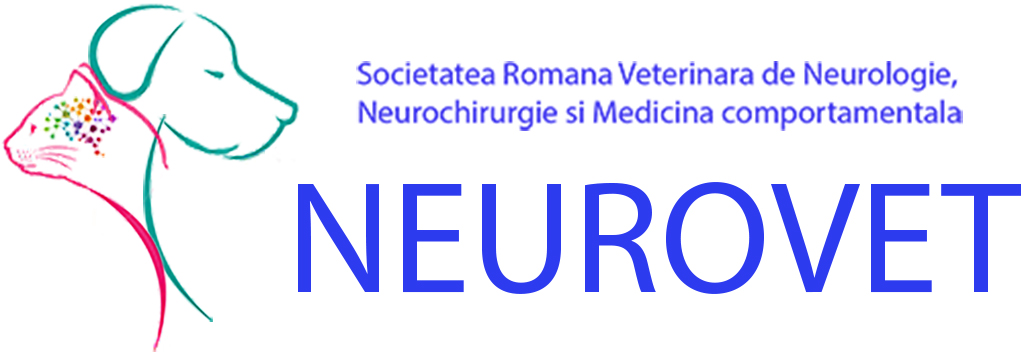Evaluation of 14-3-3σ as a Prognostic Marker in Canine Mammary Tumors
DOI:
https://doi.org/10.52331/v30i20s71Keywords:
14-3-3 σ, immunohistochemistry, canine mammary gland tumor.Abstract
14-3-3σ is a regulatory protein involved in cell cycle control and has been implicated in both tumor-suppressive and tumor-promoting roles, depending on the biological context. While extensively studied in human cancers, limited information is available regarding its expression in canine mammary gland tumors. This study aimed to assess the immunohistochemical expression of 14-3-3σ in canine mammary tumors and evaluate its potential association with malignancy indicators such as histological grade and mitotic index. A total of 62 tumor samples were analyzed using immunohistochemistry, and the area of 14-3-3σ expression was digitally quantified. Statistical comparisons were performed using non-parametric tests. An inverse trend was observed between 14-3-3σ expression and both tumor grade (p = 0.051) and mitotic (p = 0.0090) activity. These findings suggest a potential link between decreased 14-3-3σ expression and increased malignancy, supporting its relevance as a candidate prognostic marker in canine mammary tumors. Further studies with larger cohorts are needed to validate these observations.
References
1. Fu, H.; Subramanian, R.R.; Masters, S.C. 14-3-3 Proteins: Structure, Function, and Regulation. Annu. Rev. Pharmacol. Toxicol. 2000, 40, 617–647, doi:10.1146/annurev.pharmtox.40.1.617.
2. Tzivion, G.; Avruch, J. 14-3-3 Proteins: Active Cofactors in Cellular Regulation by Serine/Threonine Phosphorylation. Journal of Biological Chemistry 2002, 277, 3061–3064, doi:10.1074/jbc.R100059200.
3. Tzivion, G.; Gupta, V.S.; Kaplun, L.; Balan, V. 14-3-3 Proteins as Potential Oncogenes. Seminars in Cancer Biology 2006, 16, 203–213, doi:10.1016/j.semcancer.2006.03.004.
4. Suárez-Bonnet, A.; Herráez, P.; Mulas, J.M.D.L.; Rodríguez, F.; Déniz, J.M.; Monteros, A.E.D.L. Expression of 14-3-3 σ Protein in Normal and Neoplastic Canine Mammary Gland. The Veterinary Journal 2011, 190, 345–351, doi:10.1016/j.tvjl.2010.12.015.
5. Simpson, P.T.; Gale, T.; Reis‐Filho, J.S.; Jones, C.; Parry, S.; Steele, D.; Cossu, A.; Budroni, M.; Palmieri, G.; Lakhani, S.R. Distribution and Significance of 14‐3‐3σ, a Novel Myoepithelial Marker, in Normal, Benign, and Malignant Breast Tissue. The Journal of Pathology 2004, 202, 274–285, doi:10.1002/path.1530.
6. Iwata, N.; Yamamoto, H.; Sasaki, S.; Itoh, F.; Suzuki, H.; Kikuchi, T.; Kaneto, H.; Iku, S.; Ozeki, I.; Karino, Y.; et al. Frequent Hypermethylation of CpG Islands and Loss of Expression of the 14-3-3 σ Gene in Human Hepatocellular Carcinoma. Oncogene 2000, 19, 5298–5302, doi:10.1038/sj.onc.1203898.
7. Mhawech, P.; Benz, A.; Cerato, C.; Greloz, V.; Assaly, M.; Desmond, J.C.; Koeffler, H.P.; Lodygin, D.; Hermeking, H.; Herrmann, F.; et al. Downregulation of 14-3-3σ in Ovary, Prostate and Endometrial Carcinomas Is Associated with CpG Island Methylation. Modern Pathology 2005, 18, 340–348, doi:10.1038/modpathol.3800240.
8. Guweidhi, A. Enhanced Expression of 14-3-3sigma in Pancreatic Cancer and Its Role in Cell Cycle Regulation and Apoptosis. Carcinogenesis 2004, 25, 1575–1585, doi:10.1093/carcin/bgh159.
9. Perathoner, A.; Pirkebner, D.; Brandacher, G.; Spizzo, G.; Stadlmann, S.; Obrist, P.; Margreiter, R.; Amberger, A. 14-3-3σ Expression Is an Independent Prognostic Parameter for Poor Survival in Colorectal Carcinoma Patients. Clinical Cancer Research 2005, 11, 3274–3279, doi:10.1158/1078-0432.CCR-04-2207.
10. Ferguson, A.T.; Evron, E.; Umbricht, C.B.; Pandita, T.K.; Chan, T.A.; Hermeking, H.; Marks, J.R.; Lambers, A.R.; Futreal, P.A.; Stampfer, M.R.; et al. High Frequency of Hypermethylation at the 14-3-3 σ Locus Leads to Gene Silencing in Breast Cancer. Proc. Natl. Acad. Sci. U.S.A. 2000, 97, 6049–6054, doi:10.1073/pnas.100566997.
11. Ferreira, T.; Miranda, M.; Pinto-Leite, R.; Mano, J.F.; Medeiros, R.; Oliveira, P.A.; Gama, A. Integrated Study of Canine Mammary Tumors Histopathology, Immunohistochemistry, and Cytogenetic Findings. Veterinary Sciences 2024, 11, 409, doi:10.3390/vetsci11090409.
12. Suárez-Bonnet, A.; De Las Mulas, J.M.; Herráez, P.; Rodríguez, F.; De Los Monteros, A.E. Immunohistochemical Localisation of 14-3-3 σ Protein in Normal Canine Tissues. The Veterinary Journal 2010, 185, 218–221, doi:10.1016/j.tvjl.2009.05.014.
13. Mammary Tumors; Zappulli, V., Ed.; Surgical pathology of tumors of domestic animals / edited by M. Kiupel; Davis-Thompson DVM Foundation: Gurnee, Illinois, 2019; ISBN 978-1-73374-911-4.
14. Ko, S.; Kim, J.Y.; Jeong, J.; Lee, J.E.; Yang, W.I.; Jung, W.H. The Role and Regulatory Mechanism of 14-3-3 Sigma in Human Breast Cancer. J Breast Cancer 2014, 17, 207, doi:10.4048/jbc.2014.17.3.207.
15. Mikami, T.; Maruyama, S.; Abé, T.; Kobayashi, T.; Yamazaki, M.; Funayama, A.; Shingaki, S.; Kobayashi, T.; Jun, C.; Saku, T. Keratin 17 Is Co-Expressed with 14-3-3 Sigma in Oral Carcinoma in Situ and Squamous Cell Carcinoma and Modulates Cell Proliferation and Size but Not Cell Migration. Virchows Arch 2015, 466, 559–569, doi:10.1007/s00428-015-1735-6.
16. Boudreau, A.; Tanner, K.; Wang, D.; Geyer, F.C.; Reis-Filho, J.S.; Bissell, M.J. 14-3-3σ Stabilizes a Complex of Soluble Actin and Intermediate Filament to Enable Breast Tumor Invasion. Proc. Natl. Acad. Sci. U.S.A. 2013, 110, doi:10.1073/pnas.1315022110.
17. Yoon, N.K.; Seligson, D.B.; Chia, D.; Elshimali, Y.; Sulur, G.; Li, A.; Horvath, S.; Maresh, E.; Mah, V.; Bose, S.; et al. Higher Expression Levels of 14-3-3σ in Ductal Carcinoma in Situ of the Breast Predict Poorer Outcome1. CBM 2009, 5, 215–224, doi:10.3233/CBM-2009-0106.
18. Suárez-Bonnet, A.; Herráez, P.; Aguirre, M.; Suárez-Bonnet, E.; Andrada, M.; Rodríguez, F.; Espinosa De Los Monteros, A. Expression of Cell Cycle Regulators, 14-3-3σ and P53 Proteins, and Vimentin in Canine Transitional Cell Carcinoma of the Urinary Bladder. Urologic Oncology: Seminars and Original Investigations 2015, 33, 332.e1-332.e7, doi:10.1016/j.urolonc.2015.04.006.
19. Suárez-Bonnet, A.; Willis, C.; Pittaway, R.; Smith, K.; Mair, T.; Priestnall, S.L. Molecular Carcinogenesis in Equine Penile Cancer: A Potential Animal Model for Human Penile Cancer. Urologic Oncology: Seminars and Original Investigations 2018, 36, 532.e9-532.e18, doi:10.1016/j.urolonc.2018.09.004.
20. Suárez-Bonnet, A.; Lara-García, A.; Stoll, A.L.; Carvalho, S.; Priestnall, S.L. 14-3-3σ Protein Expression in Canine Renal Cell Carcinomas. Vet Pathol 2018, 55, 233–240, doi:10.1177/0300985817738097.
21. Hardas, A.; Suárez-Bonnet, A.; Beck, S.; Becker, W.E.; Ramírez, G.A.; Priestnall, S.L. Canine Gastric Carcinomas: A Histopathological and Immunohistochemical Study and Similarities with the Human Counterpart. Animals 2021, 11, 1409, doi:10.3390/ani11051409.
Downloads
Published
Issue
Section
Categories
License
Copyright (c) 2025 Ana Hiruta, Andrada Negoescu, Zoltán-Miklós GÁL , Alexandru Raul Pop, Cornel Cătoi

This work is licensed under a Creative Commons Attribution 4.0 International License.





